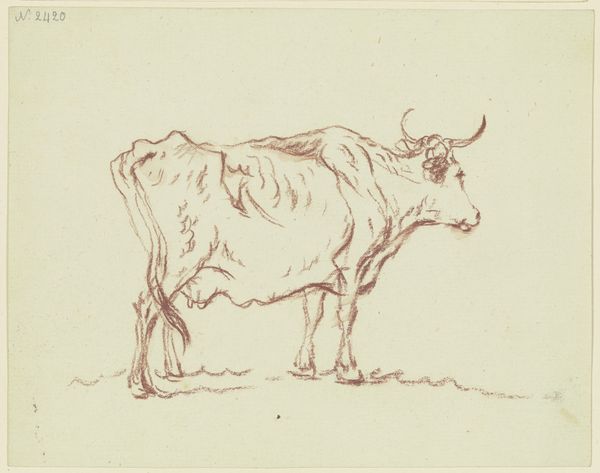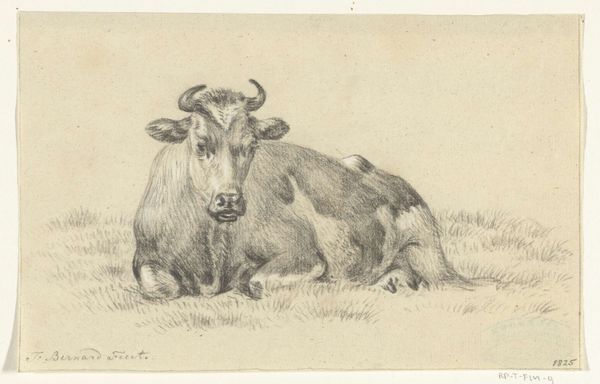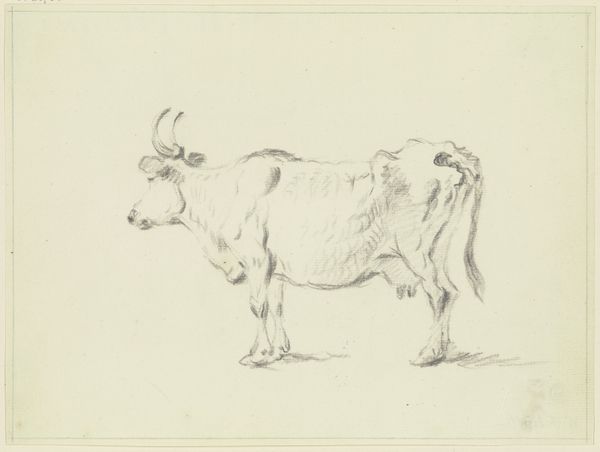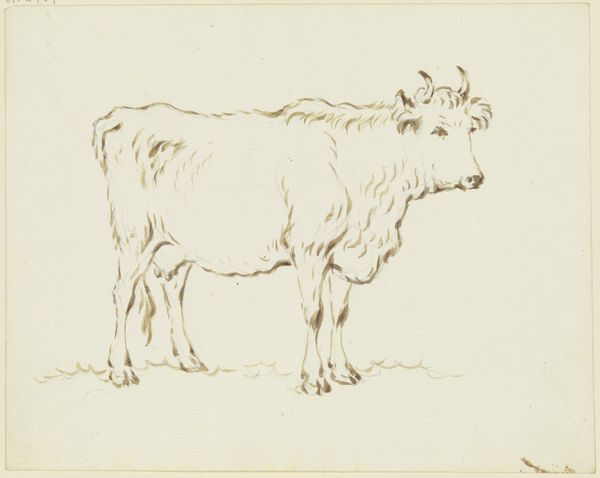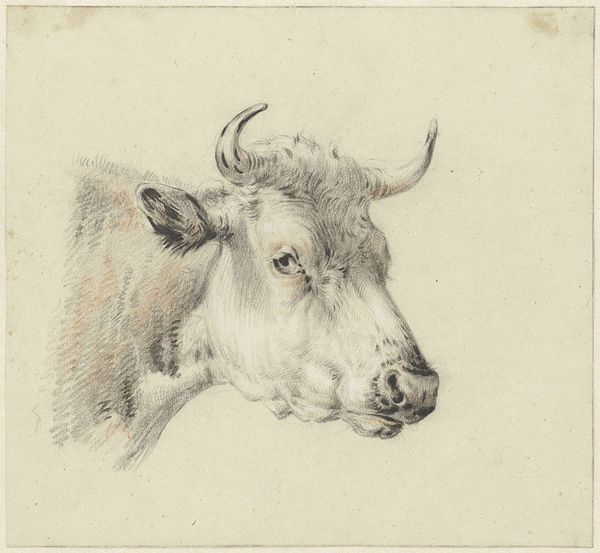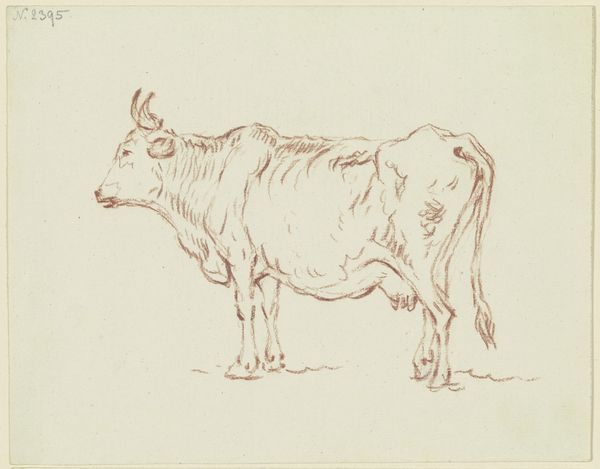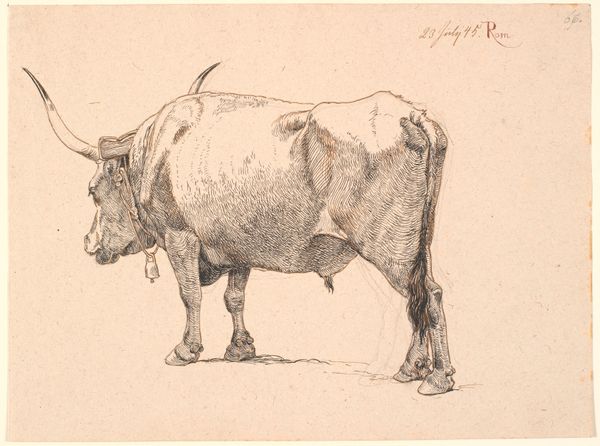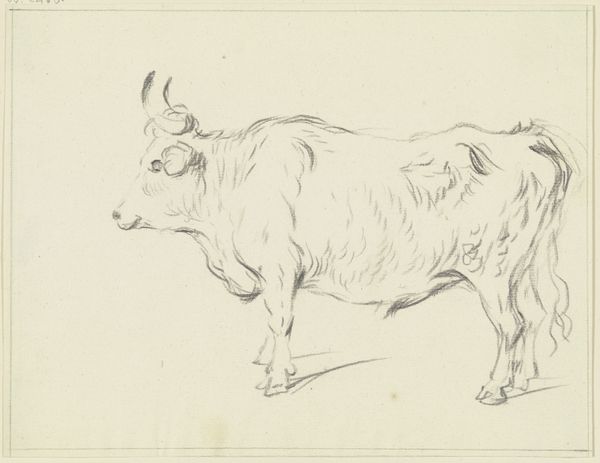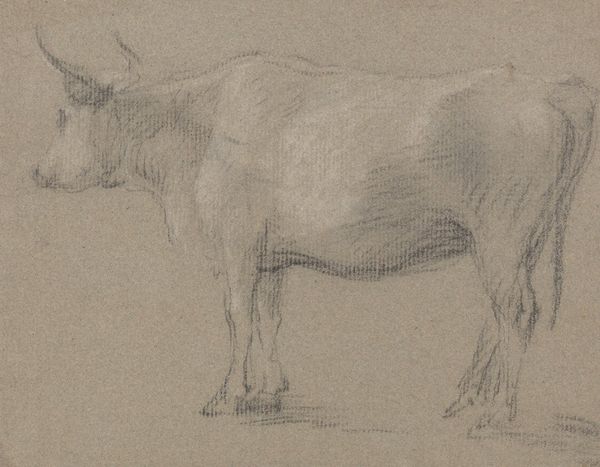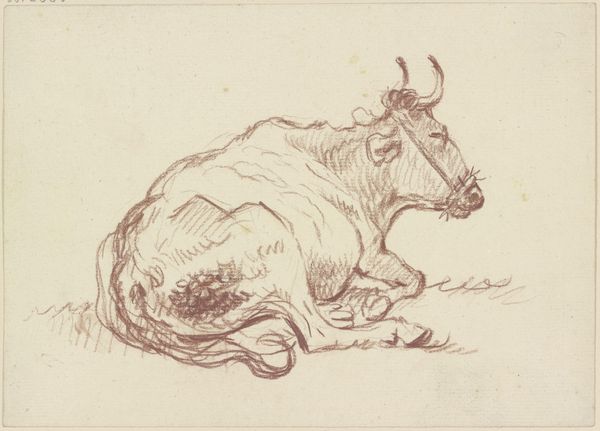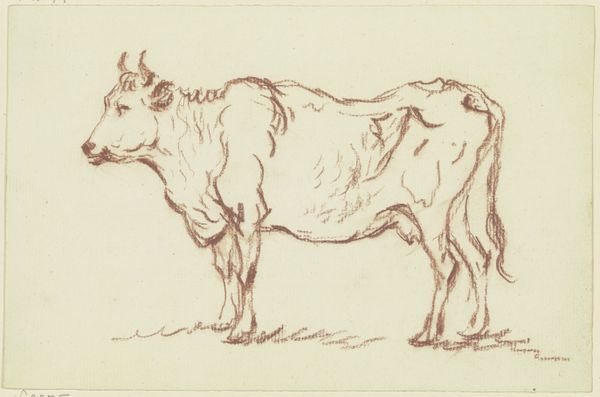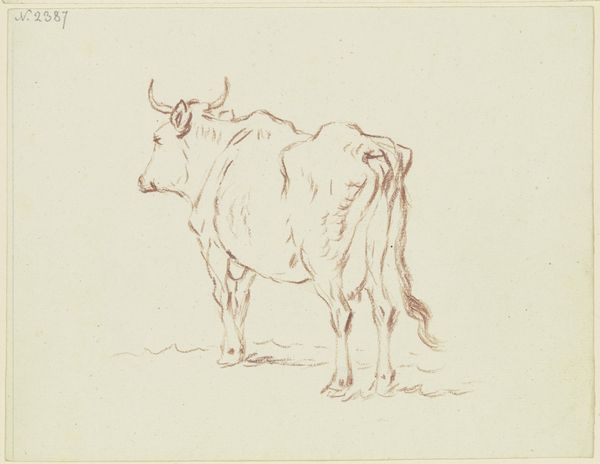
drawing, pencil
#
drawing
#
pencil sketch
#
landscape
#
figuration
#
pencil
#
realism
Dimensions: height 153 mm, width 209 mm
Copyright: Rijks Museum: Open Domain
Curator: This is Guillaume Anne van der Brugghen's "Standing Cow, Facing Right," a pencil drawing made sometime between 1821 and 1889. It depicts, quite simply, a cow. Editor: My initial reaction is one of stark simplicity. It feels like a preliminary sketch, almost fleeting in its capture of the animal’s form, but still carries this sense of presence and groundedness. Curator: Indeed. Brugghen was working during a period that saw increasing industrialization and urbanization. Rural life and agriculture were being both romanticized and scrutinized. Drawings like this offer insight into how artists negotiated these shifts. It becomes more than just a cow; it's a representation of an idealised rural past that was rapidly disappearing. We should also note the gender dynamic inherent in agricultural spaces, perhaps prompting discussions around labor, land ownership, and the cow as a symbol of feminine attributes such as fertility and sustenance. Editor: That’s a compelling angle. Thinking about how the cow functions within a gendered landscape also redirects my attention to how Brugghen portrays it. There’s no attempt at prettifying the subject; it is not pastoral idealism at play, but instead a realistic, even slightly ungainly depiction. Its plainness is both compelling and subtly subversive, resisting the commodification of the agricultural landscape. The quickness of the lines highlights the ordinary nature of rural work, an everyday scene which in itself becomes art. Curator: Absolutely. It speaks to the burgeoning realist movement and a shift away from idealized representations. Considering the power dynamics within the art world itself, who was Brugghen creating this for, and what message was he hoping to convey to them? This adds another layer of interpretation to the piece. It’s an artwork which quietly invites conversations surrounding gender roles and societal expectations of representing “natural” landscapes and animals in art. Editor: The simplicity really belies the potential for in-depth discussions. A drawing like this encourages us to consider the intersections of history, culture, and artistic representation. Curator: Agreed, I appreciate how such a simple piece on its face prompts so many important considerations regarding labour, class and identity in its period.
Comments
No comments
Be the first to comment and join the conversation on the ultimate creative platform.
